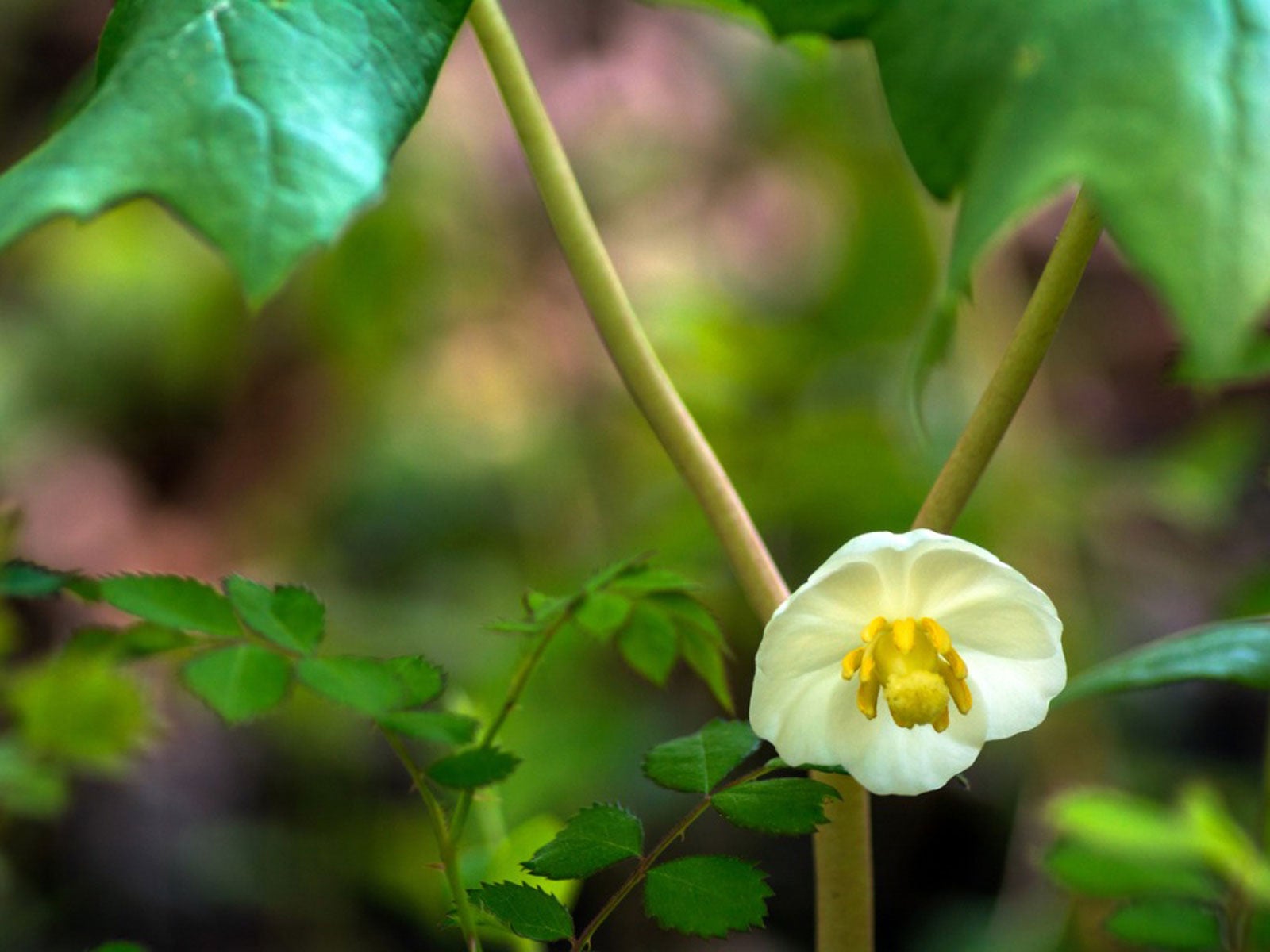
Wildflowers can be a lovely addition to all types of gardens, but especially perennial beds and natural native gardens. If you have a lot of shade, look for woodland species. The best shade wildflowers grow naturally and easily in the dappled shade under trees.
Growing Shade Tolerant Wildflowers
It’s important to remember that when growing wildflowers in shade
they do need some sunlight. Flowers native to wooded areas don’t grow in deep
shade. They grow on the edges of forests and under tall branching trees that
allow for some sun to penetrate. So make sure you plant these flowers where
they get partial shade and sun.
Woodland wildflowers need well-drained soil, no standing water, and a good amount of moisture. The soil should be rich in organic matter. These flowers are adapted to growing with year-round natural leaf mulch that you should replicate for the best results. Mulch keeps the soil moist and cool and protects wildflowers in winter.
Wildflowers for Shade
There are many shade-loving wildflowers you can choose from
for your woodland
garden or shady
beds. Some choices include:
- Mayapple – Also known as American mandrake, this pretty forest plant grows umbrella-like leaves with delicate flowers under them. This is a good choice for a spring to summer woodland groundcover.
- Virginia bluebells – The gorgeous spring flowers of Virginia bluebells carpet forest floors where they grow naturally. The early spring color is hard to beat, but the flowers will die back in the middle of summer, so you’ll need to mix it in with other plants.
- Dutchman’s breeches – The name for this unique flower comes from the pant-shaped blooms. Dutchman’s breeches is a spring bloomer that needs a lot of moisture.
- Jack-in-the-pulpit – The flowers of Jack-in-the-pulpit consist of a spathe, shaped like a pitcher and a spadix, emerging from it like a preacher in a pulpit.
- False Solomon’s seal – This is one of the taller woodland species and can grow up to 36 inches (1 m.) tall. False Solomon’s seal has bell-shaped flowers that hang over on arching stems.
- Solomon’s seal – The real deal can grow even taller, up to 48 inches (1 m.). Solomon’s seal produces white flowers.
- Columbine – These are among the prettiest of wildflowers. Depending on the species, columbine may be blue and purple, red, or yellow.
- Wild sweet William – This is a woodland phlox that produces clusters of delicate flowers in blue and light purple.
- Jacob’s ladder – Jacob’s ladder grows tall, up to three feet (1 m.), and produces pretty hanging bell-shaped flowers in clusters. They can be blue, yellow, white, or pink.
Wildflowers can be a lovely addition to all types of gardens, but especially perennial beds and natural native gardens. If you have a lot of shade, look for woodland species. The best shade wildflowers grow naturally and easily in the dappled shade under trees.
Growing Shade Tolerant Wildflowers
It’s important to remember that when growing wildflowers in shade
they do need some sunlight. Flowers native to wooded areas don’t grow in deep
shade. They grow on the edges of forests and under tall branching trees that
allow for some sun to penetrate. So make sure you plant these flowers where
they get partial shade and sun.
Woodland wildflowers need well-drained soil, no standing water, and a good amount of moisture. The soil should be rich in organic matter. These flowers are adapted to growing with year-round natural leaf mulch that you should replicate for the best results. Mulch keeps the soil moist and cool and protects wildflowers in winter.
Wildflowers for Shade
There are many shade-loving wildflowers you can choose from
for your woodland
garden or shady
beds. Some choices include:
- Mayapple – Also known as American mandrake, this pretty forest plant grows umbrella-like leaves with delicate flowers under them. This is a good choice for a spring to summer woodland groundcover.
- Virginia bluebells – The gorgeous spring flowers of Virginia bluebells carpet forest floors where they grow naturally. The early spring color is hard to beat, but the flowers will die back in the middle of summer, so you’ll need to mix it in with other plants.
- Dutchman’s breeches – The name for this unique flower comes from the pant-shaped blooms. Dutchman’s breeches is a spring bloomer that needs a lot of moisture.
- Jack-in-the-pulpit – The flowers of Jack-in-the-pulpit consist of a spathe, shaped like a pitcher and a spadix, emerging from it like a preacher in a pulpit.
- False Solomon’s seal – This is one of the taller woodland species and can grow up to 36 inches (1 m.) tall. False Solomon’s seal has bell-shaped flowers that hang over on arching stems.
- Solomon’s seal – The real deal can grow even taller, up to 48 inches (1 m.). Solomon’s seal produces white flowers.
- Columbine – These are among the prettiest of wildflowers. Depending on the species, columbine may be blue and purple, red, or yellow.
- Wild sweet William – This is a woodland phlox that produces clusters of delicate flowers in blue and light purple.
- Jacob’s ladder – Jacob’s ladder grows tall, up to three feet (1 m.), and produces pretty hanging bell-shaped flowers in clusters. They can be blue, yellow, white, or pink.
